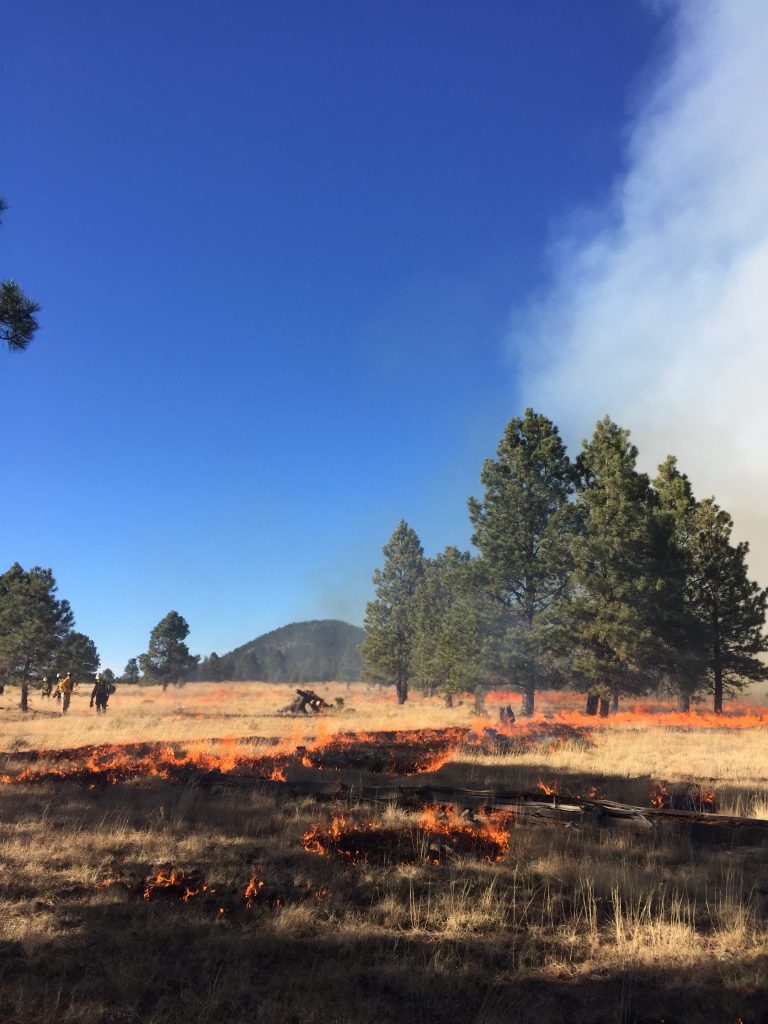In early November of 2017, a group of wildland firefighters and forest managers came together to support the common goal of making our forest healthier; by reintroducing fire back into the ecosystem. The City of Flagstaff Fire Department, The Nature Conservancy, Summit Fire District, members of the Bear Jaw Fire Crew, and a group from the Northern Arizona University chapter of the Association for Fire Ecology (SAFE), all participated in the 2 day, prescribed fire operations within the Observatory Mesa Natural Area.
(Watch as wildland fire crews put low severity fire back into the forest during the 2017 prescribed fire operation Observatory Mesa RX 2)
Historically, this type of low severity fire was no stranger to the ponderosa pine forest ecosystem of the Southwest. For centuries, this frequent, and low severity fire regime would clean the forest floor of dense small trees and woody debri, recycle important nutrients, and support a biodiverse forest resilient to drought, insect attacks, and disease.
Prescribed fire is only one part of forest management in our area. In many parts of our forests, fire crews and forest managers must first thin our overcrowded forest, before they are able to safely reintroduce fire. For several years, City staff, forest managers, and community partner organizations have been working together to do this as part of the Flagstaff Watershed Protection Project (FWPP). The operations on Observatory Mesa serve as a great example of what is possible, when a diverse group of organizations supported by the community of Flagstaff, come together to keep our forests healthy.


